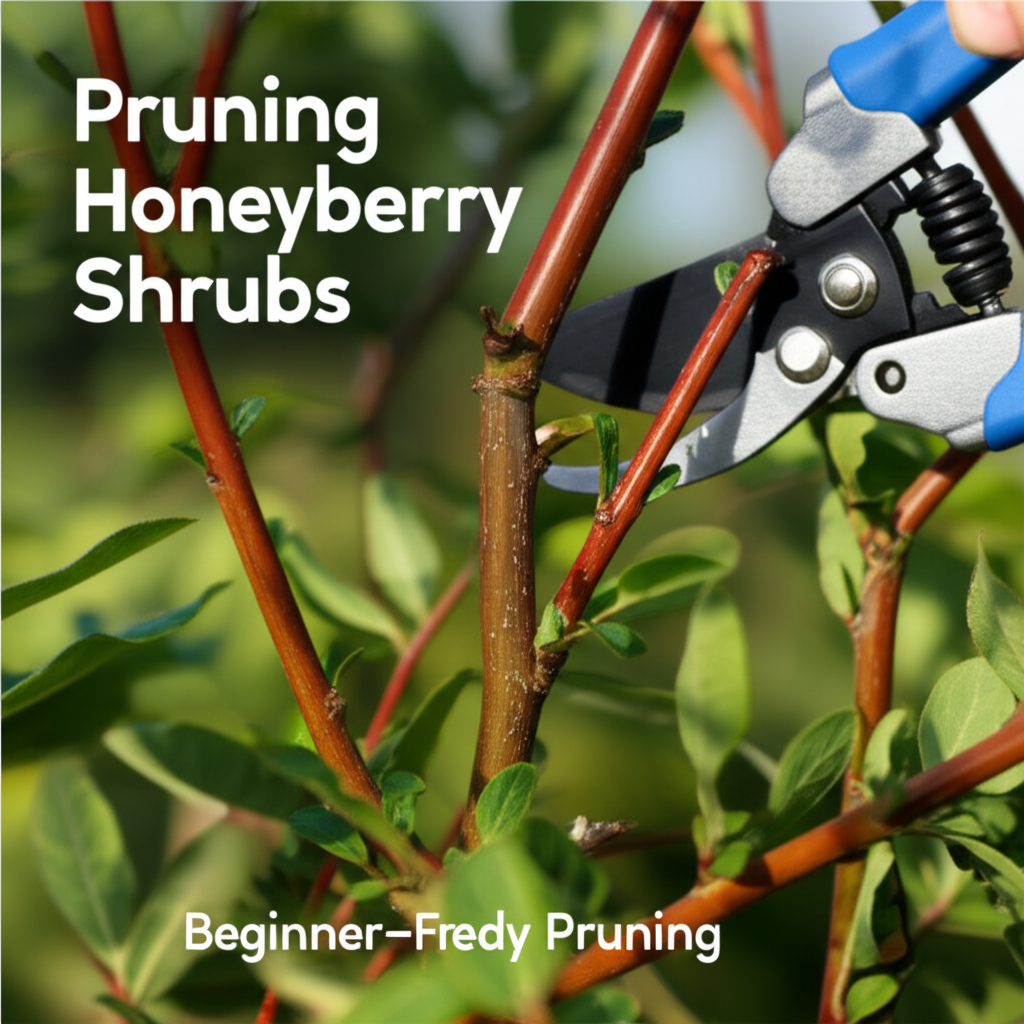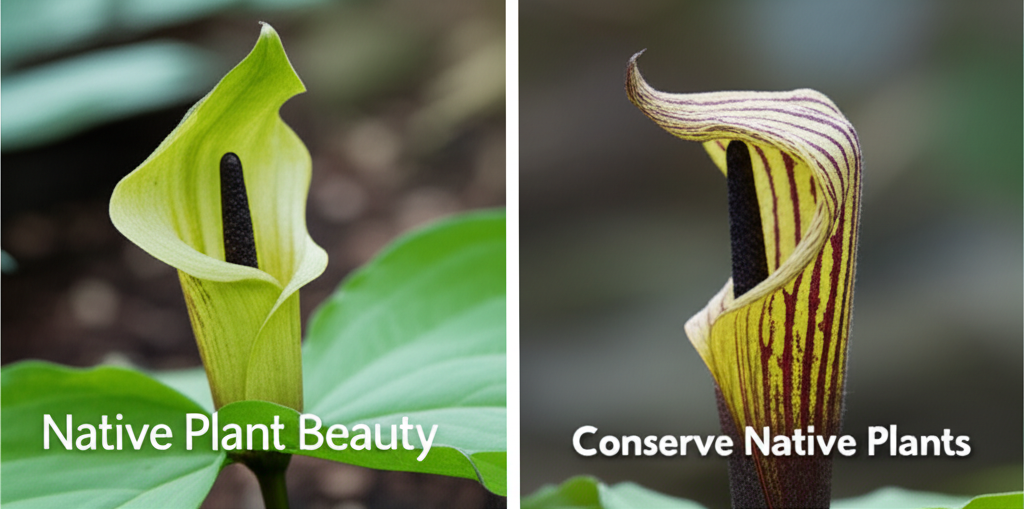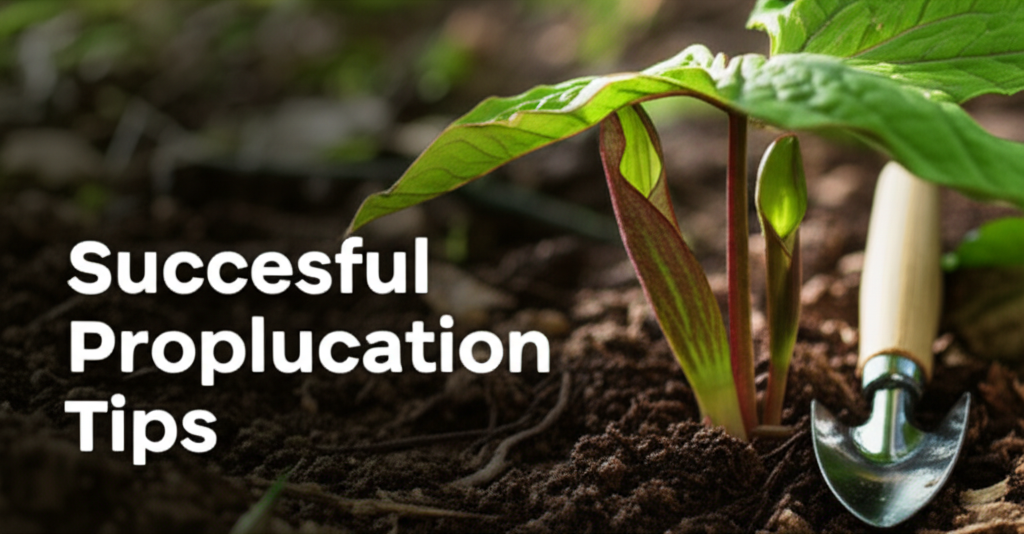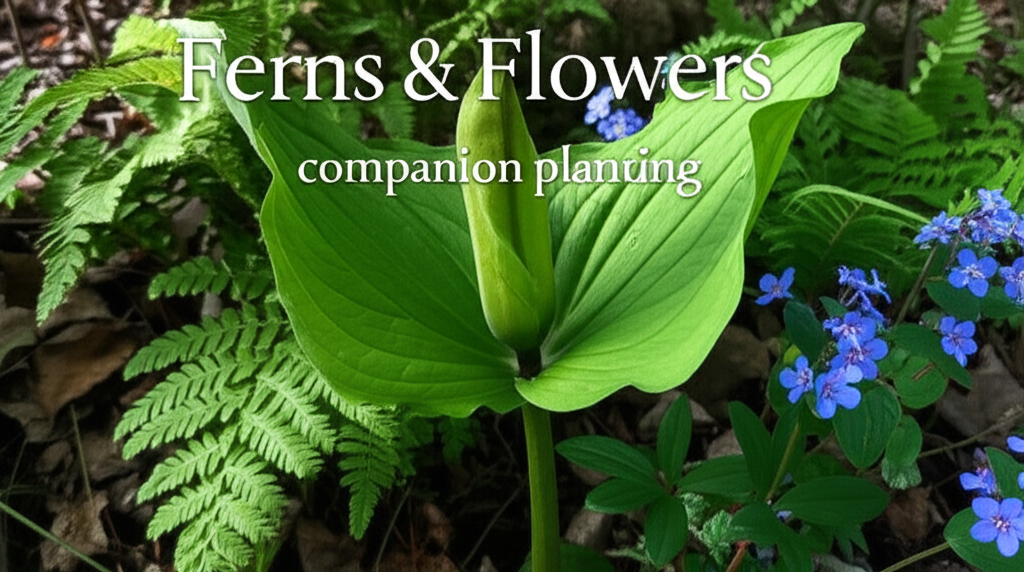Introduction to Honeyberry Pruning: Unlocking Your Shrub’s Potential
Welcome to the wonderful world of honeyberries! These delightful shrubs, also known as Haskap berries, are gaining popularity in home gardens for their early-season harvest of nutritious and delicious fruit. As a beginner-friendly landscape plant, honeyberries are relatively low-maintenance. However, a little strategic pruning can significantly boost their fruit production, overall health, and aesthetic appeal. This guide is designed to equip you with the knowledge and confidence to prune your honeyberry shrubs effectively, ensuring a bountiful harvest for years to come.
Pruning might seem intimidating at first, but with honeyberries, the process is straightforward. The goal is to encourage strong growth, good air circulation, and sunlight penetration into the plant’s center, all of which are crucial for optimal fruit development. We’ll delve into the “why,” “when,” and “how” of honeyberry pruning, breaking down the techniques into manageable steps.
Why Prune Honeyberry Shrubs? The Benefits Explained
Understanding the purpose behind pruning is key to approaching it with confidence. For honeyberry shrubs, pruning serves several vital functions:
- Increased Fruit Production: Honeyberries produce fruit on one-year-old wood. Pruning helps to remove older, less productive branches and encourages the growth of new, fruitful shoots.
- Improved Fruit Size and Quality: By thinning out the canopy, you allow more sunlight to reach developing berries, leading to better ripening and potentially larger, sweeter fruit.
- Enhanced Plant Health: Removing dead, damaged, or diseased wood prevents the spread of pathogens and promotes vigorous growth. Good air circulation also reduces the risk of fungal diseases.
- Better Shape and Structure: Pruning helps maintain a manageable size and an attractive, open shape, making harvesting easier and the plant more visually appealing in your landscape.
- Encouraging New Growth: Pruning stimulates the plant to produce new stems from the base, ensuring a consistent renewal of fruitful wood.
When to Prune Your Honeyberry Shrubs: Timing is Everything
The best time to prune honeyberry shrubs is after the harvest, typically in late summer or early fall. This allows the plant to focus its energy on developing new wood for the following year’s fruit. Pruning during this period also minimizes any stress on the plant, as it has already completed its flowering and fruiting cycle.
However, there’s also a crucial winter pruning aspect. Light pruning can be done in late winter or early spring, before bud break, primarily to remove any winter damage or crossing branches. This is a less intensive pruning and can help shape the plant before the growing season begins.
Key Honeyberry Pruning Principles for Beginners
Before we dive into the specific techniques, let’s cover some fundamental principles that apply to pruning all honeyberry varieties.
Understanding Honeyberry Growth Habits
Honeyberries are vigorous growers, often forming a dense, multi-stemmed shrub. They produce fruit on the previous year’s growth. This is a critical piece of information for pruning, as you want to ensure you’re preserving and encouraging this fruitful wood. The ideal honeyberry shrub has a balanced mix of young, fruiting stems and older, well-established stems.
The “Four Ds” of Pruning
A simple and effective way to approach any pruning task is to remember the “Four Ds”:
- Dead: Remove any branches that are clearly dead, brittle, and show no signs of life.
- Diseased: Cut out any branches with visible signs of disease, such as unusual spots, cankers, or wilting. Make sure to sterilize your pruning tools after cutting diseased wood.
- Damaged: Remove branches that are broken, cracked, or otherwise physically injured.
- Dying: This category overlaps with dead and diseased, but it also includes branches that are weak, spindly, or showing poor vigor.
The “Open Center” Concept
For honeyberries, the goal is often to create an “open center” or vase shape. This means removing branches that grow inwards towards the center of the shrub. An open center allows for better light penetration and air circulation, which are vital for healthy growth and abundant fruit.
Essential Pruning Tools for Honeyberry Success
Having the right tools makes the job easier and safer for both you and your plants. For honeyberry pruning, consider these essential tools:
- Bypass Pruners: These are ideal for cutting smaller branches (up to about 3/4 inch in diameter). Bypass pruners make clean cuts, similar to scissors, which heal better.
- Loppers: For branches thicker than 3/4 inch but up to 1.5 inches, loppers provide the necessary leverage.
- Pruning Saw: For larger, woody branches, a pruning saw is essential. Look for one with a curved blade and sharp teeth for efficient cutting.
- Gloves: Protect your hands from thorns (if any) and sap.
- Rubbing Alcohol or Bleach Solution: To sterilize your tools between cuts, especially when dealing with diseased wood.
Table 1: Essential Pruning Tools Comparison
| Tool Name | Best For | Cut Diameter (Approx.) | Notes |
| :————– | :——————————————- | :——————— | :——————————————– |
| Bypass Pruners | Small, green stems and branches | Up to 3/4 inch | Clean cuts, essential for detail work. |
| Loppers | Medium-sized branches | Up to 1.5 inches | Provides leverage for thicker stems. |
| Pruning Saw | Large, woody stems and old branches | Over 1.5 inches | Curved blade for easy maneuverability. |
| Gloves | Hand protection | N/A | Protects against sap, thorns, and splinters. |
| Sterilizing Agent | Tool sanitation | N/A | Prevents disease spread. |
Honeyberry Pruning Techniques: A Step-by-Step Approach
Now that we understand the principles and tools, let’s get hands-on with the actual pruning process.
Step 1: Assess Your Honeyberry Shrub
Before making any cuts, take a moment to observe your honeyberry shrub. Identify which branches are old, which are young and vigorous, and look for any of the “Four Ds.” Think about the overall shape you want to achieve.
Step 2: Make the Initial “Four Ds” Cuts
Start by removing any dead, diseased, damaged, or dying branches using your bypass pruners or loppers as needed. Cut back to healthy wood. If you’re cutting diseased wood, make sure to sterilize your tools after each cut.
Step 3: Thinning for Air Circulation and Light Penetration
This is where you start shaping the plant. Look for branches that are:
- Crossing or Rubbing: Remove one of the branches to prevent damage and improve structure.
- Growing Inward: Eliminate branches that are growing towards the center of the shrub.
- Weak or Spindly: Cut back weak, unproductive growth to encourage stronger stems.
Aim to create a balanced structure with good spacing between branches.
Step 4: Removing Old, Unproductive Wood
Honeyberries fruit best on one-year-old wood. Older, thicker stems that are no longer producing vigorous new growth should be gradually removed. These are often characterized by rougher bark and fewer fruiting spurs. Prune these back to the ground or to a healthy side branch.
- Tip: You don’t need to remove all old wood in one year. You can remove 1-2 of the oldest, thickest stems each year to promote a continuous renewal of the shrub.
Step 5: Shortening Fruit-Bearing Branches (Optional)
If you want to encourage bushier growth and potentially larger, but possibly fewer, berries, you can lightly shorten some of the younger, fruit-bearing branches. Make the cut just above an outward-facing bud. However, for maximum fruit production, it’s often best to leave the fruit-bearing wood largely intact.
Step 6: Final Shaping and Cleanup
Step back and assess the overall shape. Remove any stray branches or suckers growing from the base that are not contributing to the desired structure. Ensure your cuts are clean and close to the main stem or ground, without leaving stubs.
Table 2: Honeyberry Pruning – Steps, Pros, and Cons
| Step/Action | Description | Pros | Cons |
| :—————————————- | :————————————————————————————————————- | :——————————————————————————————————————————- | :———————————————————————- |
| Remove “Four Ds” | Cut out dead, diseased, damaged, or dying branches. | Improves plant health, prevents disease spread, removes hazards. | Can be time-consuming if the plant is neglected. |
| Thinning | Remove crossing, rubbing, or inward-growing branches. | Enhances air circulation, increases light penetration, improves structure. | May reduce immediate fruit yield if too much is removed. |
| Removing Old Wood | Cut out the oldest, thickest stems that are less productive. | Stimulates new growth, renews the plant’s fruiting potential. | Requires careful identification of old vs. young wood. |
| Shortening Young Branches (Optional) | Cut back young branches to encourage bushier growth. | Can lead to denser growth and potentially larger berries. | May reduce the total number of berries produced. |
| Post-Pruning Cleanup | Remove all pruned material from the area. | Prevents disease and pest harborage, keeps the garden tidy. | Requires proper disposal of cuttings. |
| Pruning Too Much at Once | Removing a significant portion of the shrub in a single pruning session. | Can dramatically change the plant’s appearance. | Can shock the plant, reduce fruit yield significantly for one season. |
| Pruning at the Wrong Time (e.g., mid-bloom) | Making major pruning cuts during active flowering or fruiting. | N/A | Significantly reduces fruit production for that season. |
Common Pruning Mistakes to Avoid
Even with the best intentions, beginners can sometimes make mistakes. Here are a few common pitfalls to steer clear of:
- Over-pruning: Removing too much of the plant at once can shock it and severely reduce fruit production. Aim for removing no more than 20-30% of the canopy in any given year.
- Pruning at the Wrong Time: As mentioned, late summer/early fall is generally best for major pruning. Avoid heavy pruning during active growth or when the plant is under stress.
- Making Flush Cuts: Avoid cutting branches flush with the trunk or ground, as this can damage the collar and hinder healing. Instead, cut just outside the branch collar.
- Using Dull Tools: Dull blades crush rather than cut, leading to ragged wounds that are more susceptible to disease. Always ensure your tools are sharp.
- Not Sterilizing Tools: If you’re dealing with any signs of disease, not sterilizing your pruners can spread the problem to other parts of the plant or to other plants.
Pruning Different Honeyberry Varieties
While the general principles apply to all honeyberry varieties, there might be slight nuances depending on the specific cultivar you have. However, for beginner-friendly landscapes, the techniques described above are universally applicable to popular varieties like ‘Aurora,’ ‘Borealis,’ ‘Honeybee,’ and ‘Tundra.’ Focus on maintaining an open, healthy structure, and your plants will reward you.
Pruning Young Honeyberry Shrubs (First 1-2 Years)
The first few years of your honeyberry shrub’s life are crucial for establishing a strong framework.
- Year 1: Focus on removing any weak or damaged shoots. If the plant is very bushy, you might select 3-5 of the strongest, most well-spaced shoots to form the foundation of your shrub and prune back any competing shoots.
- Year 2: Continue to remove any poorly placed or weak branches. You can start to select for a few of the strongest new stems that will become your primary fruiting wood in subsequent years.
Avoid heavy pruning in the first two years, as the plant is still establishing itself. The goal is to encourage vigorous growth and a good structure.
Maintenance Pruning for Established Shrubs
Once your honeyberry shrubs are established (typically after 3-4 years), you’ll move into a maintenance pruning routine. This involves the annual removal of the “Four Ds,” thinning to maintain an open center, and gradually removing a few of the oldest stems each year to promote rejuvenation.
The goal of maintenance pruning is to keep the shrub productive, healthy, and easy to manage.
Conclusion: Enjoying Your Honeyberry Harvest
Pruning your honeyberry shrubs doesn’t have to be a daunting task. By understanding the benefits, timing, and basic techniques, you can easily maintain healthy, productive plants. Remember to start with the “Four Ds,” thin for light and air, and gradually renew older wood. With a little consistent effort, your honeyberry shrubs will provide you with delicious, nutritious berries year after year, adding a sweet success to your beginner-friendly landscape. Happy pruning!
Honeyberry Shrub Pruning: Key Facts/Comparison
| Feature | Young Honeyberry (1-3 Years) | Mature Honeyberry (4+ Years) | General Pruning Goals |
|---|---|---|---|
| Primary Goal | Establishment & Shape | Fruit Production & Airflow | Healthy growth, good yield, disease prevention |
| Timing | Late Winter/Early Spring (dormant) | Late Winter/Early Spring (dormant) | Dormant season is generally preferred |
| Cut Type | Thinning cuts, heading cuts (sparingly) | Thinning cuts, renewal cuts | Sharp, clean cuts just outside bud or branch collar |
| Focus | Remove weak, crossing, or damaged branches. Encourage a strong central leader or balanced structure. | Remove older, less productive wood (older than 5 years). Thin out dense areas. Encourage new fruiting wood. | Balance vigor and fruitfulness. |
| Frequency | Minimal, focus on shaping | Annual or biennial | Depends on growth habit and desired outcome |
Honeyberry Shrub Pruning: Steps/Pros-Cons
| Step/Aspect | Description | Pros | Cons |
|---|---|---|---|
| Step 1: Assess the Shrub | Examine the overall shape, identify dead, damaged, diseased, or crossing branches. Look for weak growth. | Identifies priority areas for pruning. Prevents unnecessary cuts. | Requires a good understanding of plant health and structure. |
| Step 2: Remove Dead, Damaged, or Diseased Wood | Cut these branches back to healthy wood or to the ground. | Improves plant health. Prevents spread of disease. Enhances appearance. | May remove a significant portion of the plant if neglected. |
| Step 3: Thin Out Crossing or Rubbing Branches | Remove one of the branches where they are rubbing or crossing. | Prevents wound creation and potential entry points for disease. Improves airflow. | Can be subjective to determine which branch to remove. |
| Step 4: Remove Weak or Poorly Placed Growth | Eliminate thin, spindly stems or branches growing inward or downward. | Directs energy to stronger growth. Improves shape and structure. | Requires identifying and differentiating between weak and strong stems. |
| Step 5: Remove Old, Non-Productive Wood (Mature Shrubs) | Identify branches that are 5+ years old, often appearing thicker and darker. Cut them back to the ground or to a strong new shoot. | Stimulates new, vigorous fruiting wood. Maintains fruit production. | Can reduce fruit yield in the immediate season after heavy renewal pruning. |
| Step 6: Shape and Balance (Optional) | Lightly trim to maintain a desired shape, remove any branches that are too long or detract from the overall aesthetic. | Improves visual appeal. Can make harvesting easier. | Over-pruning for shape can reduce fruit production. |
| General Pros of Pruning | Encourages better fruit production, improves air circulation, prevents disease, maintains plant vigor and shape. | Healthier plants, increased yields, longer lifespan. | Requires proper technique and timing. |
| General Cons of Pruning | Over-pruning can reduce fruit yield, incorrect cuts can damage the plant, improper timing can affect flowering/fruiting. | Potential for reduced harvest if done incorrectly. | Can be intimidating for beginners. |



